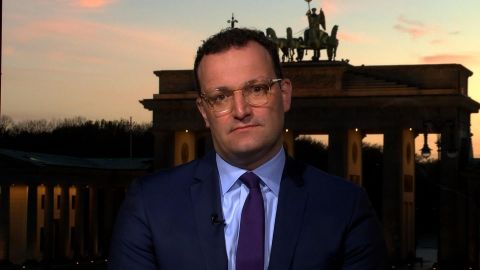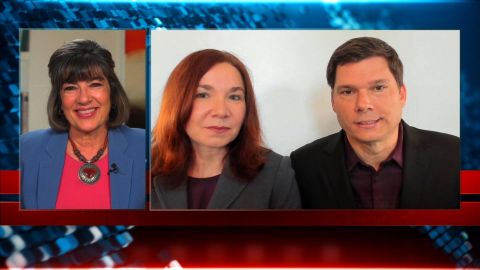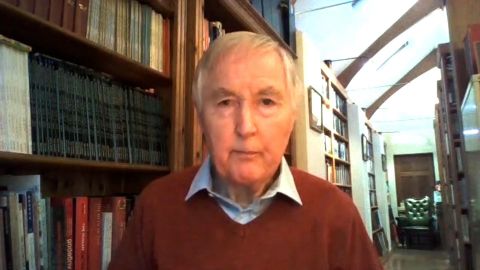Read Transcript EXPAND
KATHARINE HAYHOE, CLIMATE SCIENTIST: We are seeing a glimpse of what our blue skies and our clean air and our clear water would look like in a clean energy future. Now, we have not achieved those today through sustainable methods. People have to return to work, children need to return to school, the economy needs to start back up. But if we had that economy powered by clean energy, that is what our skies, our water, and our land would look like.
CHRISTIANE AMANPOUR: So, I mean, I mentioned China, down by 25 percent of carbon and pollution. Delhi, India, which is very polluted, down by 71 percent. But here’s the question, then, people are going to say and ask, is the cost of clean air and clear skies a total halt of the global economy?
HAYHOE: It is not if it is achieved through sustainable methods. What are those? Those are massive increases in efficiency, which could take the United States halfway to its Paris goal all by itself. Transitioning our economies to clean sources of energy, a transition that is already underway, with about 70 percent of new electricity around the world being installed today, being wind or solar energy. And reducing our independence, ultimately, on the old and dirty fuels that have served us we for centuries, but are no longer our future.
AMANPOUR: So, what do you think is going to come out of this? You know, we’ve got many — you know, people who have — who are activists and scientists on this who just — you know, just hope that this is going to be a turning point. What do you actually think? Because, again, you know, airliners haven’t been flying in the way that they normally do. And there’s been a massive, massive drop, you know, carbon dioxide emissions dropped 31 percent from airlines in March. You know, that’s 28 million tons of carbon dioxide. That’s great news for the planet, great news for us. But again, is it sustainable? What does airline travel look like after the, you know, economy gets back up and running again?
HAYHOE: The changes that we have seen today, very few of them are sustainable. I certainly hope that people have recognized that there are different ways to communicate and engage without having to be physically present all the time. But as the economy ramps back up, so, too, will our carbon emissions. But that’s not to say that we haven’t learned something.Because what we have learned is that when we act decisively to confront a risk that challenges us all, we can make a difference. Imagine this. Imagine that if the pandemic leads to maybe about a 10 or 15 percent reduction in carbon emissions around the world, temporarily, just for a few weeks, imagine if those reductions had been achieved through sustainable methods, like efficiency and clean energy, we would be a quarter of our way to the Paris goal for the United States and for the world, in just a matter of weeks. It showed us that when it really comes down to it, we are able to act.
About This Episode EXPAND
Christiane speaks with German Health Minister Jens Spahn, climate scientist Katharine Hayhoe, Pastor Andrew Farley, and historian Archie Brown. Sheela Kolhatkar speaks with former FDIC chair Sheila Bair.
LEARN MORE



